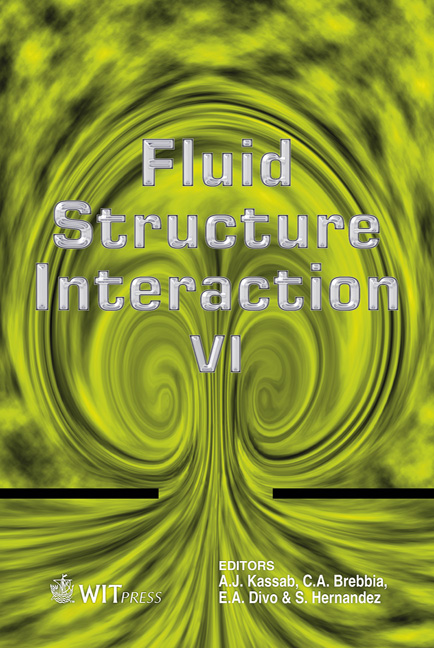Application Of The K- Turbulence Model To Assess The Flutter Derivatives Of A Long Span Bridge
Price
Free (open access)
Transaction
Volume
115
Pages
12
Page Range
231 - 242
Published
2011
Size
752 kb
Paper DOI
10.2495/FSI110201
Copyright
WIT Press
Author(s)
F. Brusiani, G. Cazzoli, S. de Miranda, F. Ubertini & P. Vaona
Abstract
This paper considers the influence of the turbulence model adopted to numerically predict the aero-elastic phenomena in Fluid Structure Interaction (FSI) problems. After a detailed evaluation of the main suitable turbulence models available in the Reynolds Average Navier Stokes (RANS) approach, the two-equation k-turbulent model was identified as the best compromise between solution accuracy and computational cost. In order to test the k- turbulence model performance for FSI applications, a specific simulation methodology was defined. It was firstly tested in assessing the aerodynamic forces resulting on static bluff bodies for which experimental databases were available. Then, the simulation methodology based on the k- turbulence model was used to reproduce the steady and unsteady aerodynamic forces induced on a Great Belt East bridge cross section subjected to wind load. In particular, the unsteady aerodynamic forces induced on the bridge were evaluated by calculating the flutter derivatives. As for the test cases, also for the Great Belt East bridge the computational results were compared to experimental evidence obtained by wind tunnel tests. Keywords: numerical simulation, turbulence, long span bridge, flutter derivatives. 1 Introduction On built environments subjected to fluid flow action, vibrations can be forced by vortex resonance or structure self-excitation. When fluid-structure interaction
Keywords
numerical simulation, turbulence, long span bridge, flutter derivatives





